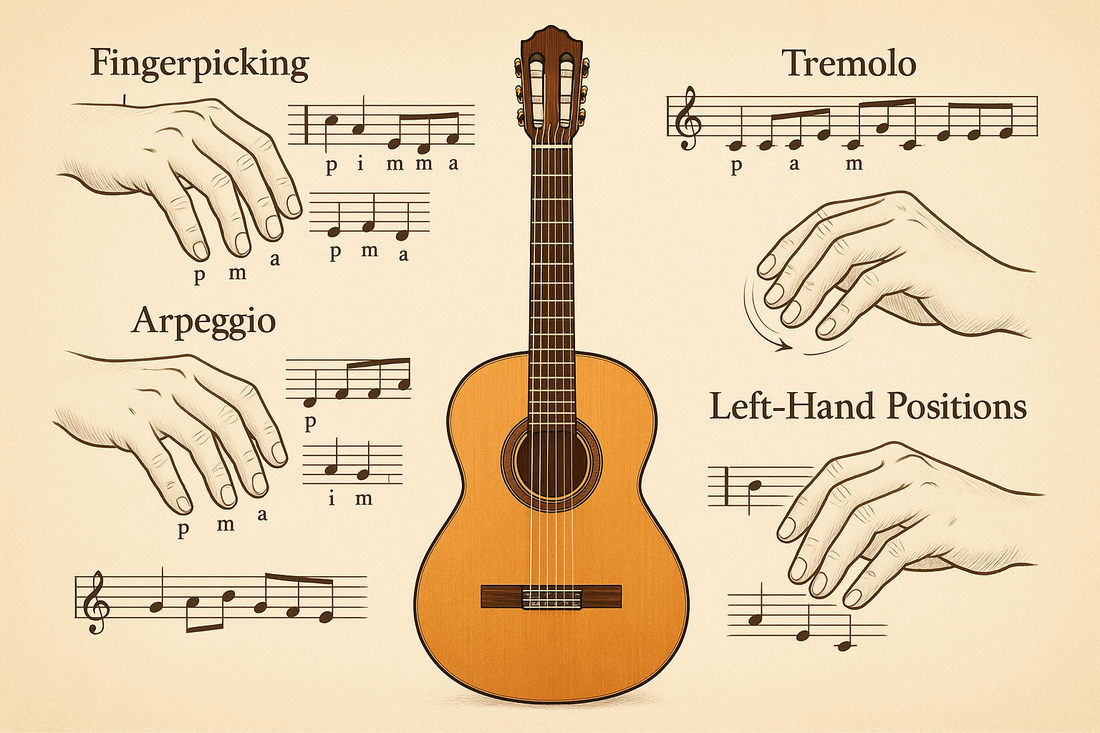
Classical Guitar Techniques: A Comprehensive Guide
As a classical guitar player, mastering a variety of techniques is essential to your success. From basic strumming and picking patterns to more advanced techniques like tremolo and arpeggios, there are many different approaches to playing the classical guitar. In this comprehensive guide, we’ll explore some of the most important classical guitar techniques that every player should know.
- Strumming. Strumming is a basic technique that involves using a plectrum or your fingers to brush across the strings of the guitar in a rhythmic pattern. To strum effectively, you’ll need to pay attention to your pick attack, the angle of your pick, and the pressure you use when striking the strings.
- Picking. Picking is another fundamental technique that involves using a plectrum or your fingers to pluck the strings of the guitar one at a time. This technique is essential for playing melodies and single-line passages, and it requires precise finger placement and good hand control.
- Tremolo. Tremolo is a technique that involves rapidly repeating a single note or chord using alternate fingerpicking patterns. This technique creates a shimmering, sustained sound that can add depth and expression to your playing.
- Arpeggios. An arpeggio is a technique that involves playing the individual notes of a chord one at a time rather than strumming the entire chord. This technique can add texture and interest to your playing and is commonly used in classical and fingerpicking styles.
- Slurs. A slur is a technique that involves smoothly transitioning between two or more notes without lifting the fingers off the strings. This technique is commonly used in classical music and requires precise finger placement and good hand control.
- Vibrato. Vibrato is a technique that involves slightly altering the pitch of a note by rapidly moving your left hand back and forth on the neck of the guitar. This technique adds expression and depth to your playing and can be achieved through a variety of finger and hand movements.
- Harmonics. Harmonics are a technique that involves lightly touching the strings at specific points along the neck of the guitar to produce a high, chiming sound. This technique requires precise finger placement and a light touch, and it can add a unique and ethereal quality to your playing.
- Legato. Legato is a technique that involves smoothly connecting one note to the next by using your left hand to slide between the notes rather than picking each one individually. This technique requires good hand control and a smooth, fluid motion.
- Rasgueado. Rasgueado is a flamenco-style technique that involves rapidly strumming the strings of the guitar with the fingers of the right hand. This technique is typically used in fast, rhythmic passages and requires precise finger placement and good hand control.
- Capo. A capo is a device that is attached to the neck of the guitar and used to raise the pitch of the strings. This technique is commonly used to play pieces in different keys or to facilitate the playing of certain chords or scales.
By mastering these classical guitar techniques, you’ll be well on your way to becoming a skilled and accomplished player. Don’t be afraid to experiment and try out different techniques – the more you practice and explore, the more proficient you’ll become.

















